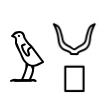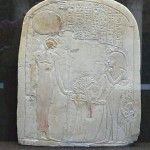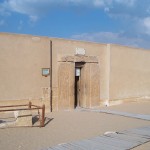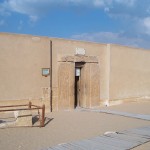
Notes on Legal Vocabulary (Old Kingdom and the First Intermediate Period)
In approaching the study of sAb, I raised the issue of the purport of this title and proposed a hypothesis for its translation (Vande Walle 2011) which differs from the usual notion of judge. In doing so, I collected some data on terminology concerning the act of judging and of the actors revolving around its implementation, which are the subject of this work. [more…]

sAb Corpus
The sAb Corpus is a 300+ page compendium of the instances of the various forms of the use of the title sAb or “Justice” [more…]

Notes in the margins of the scene termed “rendering accounts” in the mastaba of Mereruka
The mastaba of Mereruka, called Meri, is located at Saqqara, near the pyramid of Teti, next to the pre-existing tomb of his colleague, Kagemni. Both acceded to the post of vizier during the reign of Teti, at the beginning of the 6th Dynasty. The vast building is divided into three parts, sheltering, besides the deceased, his wife Seshseshet (daughter of Teti) and their daughter Meryteti. Those who visit the tomb cannot fail to notice, at the beginning of the circuit, a scene decorating the lower part of the left wall of the long passage that leads to section A reserved for Mereruka. [more…]

Notes en marge de la scène dite «de reddition des comptes» dans le mastaba de Mererouka
Le mastaba du Mererouka, dit Meri, se situe à Saqqara, à proximité de la pyramide de Teti, jouxtant la tombe préexistante de son collègue Kagemni. Tous deux ont accédé au vizirat sous le règne de Teti, au début de la VIe dynastie. Le vaste bâtiment se divise en trois parties, hébergeant outre le défunt, son épouse Seshseshet (fille de Teti) et leur fille Meryteti. Ceux qui ont visité la tombe n’auront pas manqué de remarquer, en début de parcours, une scène décorant la paroi gauche, dans sa partie inférieure, du long passage menant à la section A réservée à Mererouka. [more…]
Comparison of the stelae of wsrimn (Fisher Collection, Detroit) and of ddwsbk (Louvre C240 and BM566) of Dynasty XII
Abstract
The 12th Dynasty (Middle Egytian) judicial system was surprisingly modern in its approach and composition, but our knowledge is assembled by a process of deduction. Most of the key evidentiary sources are testimonial stelae which list the titles held by senior officials during their lifetimes. The nature of an individual’s role in the judicial process can be postulated from the combination of titles held, in turn allowing a picture of the overall operation of kingly justice to emerge. “The paper considers the titles and history of two such individuals, comparing and contrasting the titles they held to build a picture which reveals the existence of investigative judicial processes. [more…]
The sAb in the Old Kingdom: a consideration of the title within the scope of a prosopographic study
Abstract
The article aims to give an overview of the activities of the bearer of the title sAb in the Old Kingdom and to propose a definition for it. It is based on the analysis of more than 500 documents, citing 76 titles including the term sAb and to collate all these in the titularies of the individuals concerned. It also attempts a brief description of the nature of the functions of the practitioners of justice, citing the autobiography of Weni. It further points up the connections to judicial institutions and the references to actions of a judicial nature, but also emphasises the “non-judicial” spheres involving the sAb. The article formulates a basic structure, centred round the knowledge and practice of law and orientated towards various sectors, such as the administration of the State in its diverse facets, the function of the judiciary and the management of patrimony in the great temples through specialisation. The term sAb could be the hallmark of the title holder in the field of law, but without confining him to the specific function of a sole judge. [more…]
Le sAb à l’Ancien Empire: une Approche du Titre en Marge d’une étude Prosopographique
Le sAb à l’Ancien Empire : une approche du titre en marge d’une étude prosopographique Etienne Vande Walle [Editors’ Note – this the orginal French text. An English translation appeared in the Journal on 30th June 2011.] A l’occasion de l’examen de 522 titulatures d’Ancien Empire contenant le terme sAb nous avons pu constater […] [more…]
 By
By